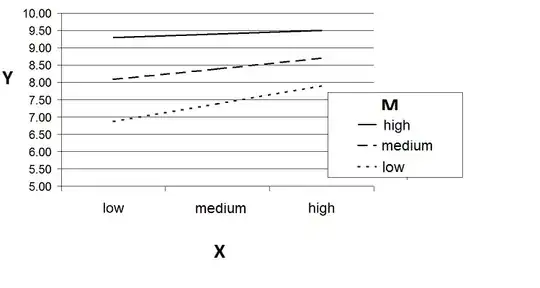Let $\{X_i\}_{i=1}^n$ with $X_i\overset{\text{i.i.d}}{\sim}\beta^\prime(\alpha,\beta)$ and $Z=X_1+\dots+X_n$. It follows from linearity of the expected value that
$$
\mathsf EZ=\sum_{i=1}^n\mathsf EX_i=n\mathsf EX=\frac{n\alpha}{\beta-1},\quad\beta>1.
$$
Furthermore, by mutual independence of the $X_i$'s we have
$$
\mathsf{Var}Z=\sum_{i=1}^n\mathsf{Var}X_i=n\mathsf{Var}X=\frac{n\alpha(\alpha+\beta-1)}{(\beta-2)(\beta-1)^2},\quad\beta>2.
$$
Since we know $Z\sim\beta^\prime(\gamma,\delta)$ we may write the system of equations
$$
\begin{aligned}
\frac{n\alpha}{\beta-1} &=\frac{\gamma}{\delta-1}\\
\frac{n\alpha(\alpha+\beta-1)}{(\beta-2)(\beta-1)^2} &=\frac{\gamma(\gamma+\delta-1)}{(\delta-2)(\delta-1)^2}.
\end{aligned}
$$
Solving this system for $\gamma$ and $\delta$ subsequently yields the following result:
$$
\begin{aligned}
\gamma &=\frac{\alpha n \left(\alpha +\beta ^2-2 \beta +\alpha \beta n-2
\alpha n+1\right)}{(\beta -1) (\alpha +\beta -1)}\\
\delta &=\frac{2 \alpha +\beta
^2-\beta +\alpha \beta n-2 \alpha n}{\alpha +\beta -1}.
\end{aligned}
$$
With some algebra you may be able to simplify these expressions.
Update:
Based on the discussion surrounding the exactness/correctness of the results I decided to perform an experiment in MATLAB. Here is the code used which performs the simulation for $\alpha=\beta=15$ and $n=5$:
a = 15; %alpha
b = 15; %beta
n = 5;
c = (a*n*(a-2*b-2*a*n+b^2+a*b*n+1))/((b-1)*(a+b-1)); %gamma
d = (2*a-b-2*a*n+b^2+a*b*n)/(a+b-1); %delta
Xdata = 1./betarnd(a,b,1e6,n)-1;
Xn = sum(Xdata,2); %Xn = X_1+X_2+...+X_n
ax = linspace(0,max(Xn),256);
f_Xn = @(x) x.^(c-1).*(1+x).^(-c-d)/beta(c,d);
figure
hold on
histogram(Xn,64,'normalization','pdf')
plot(ax,f_Xn(ax),'Color',[0,0,0],'LineWidth',1.5)
xlabel(['X_' num2str(n)])
ylabel('density')
box on
hold off
Here we see that the histogram does indeed agree with the theoretical beta prime distribution with parameters $\gamma$ and $\delta$ as derived above. I tried other values of $\alpha$, $\beta$ and $n$ with similar results.

